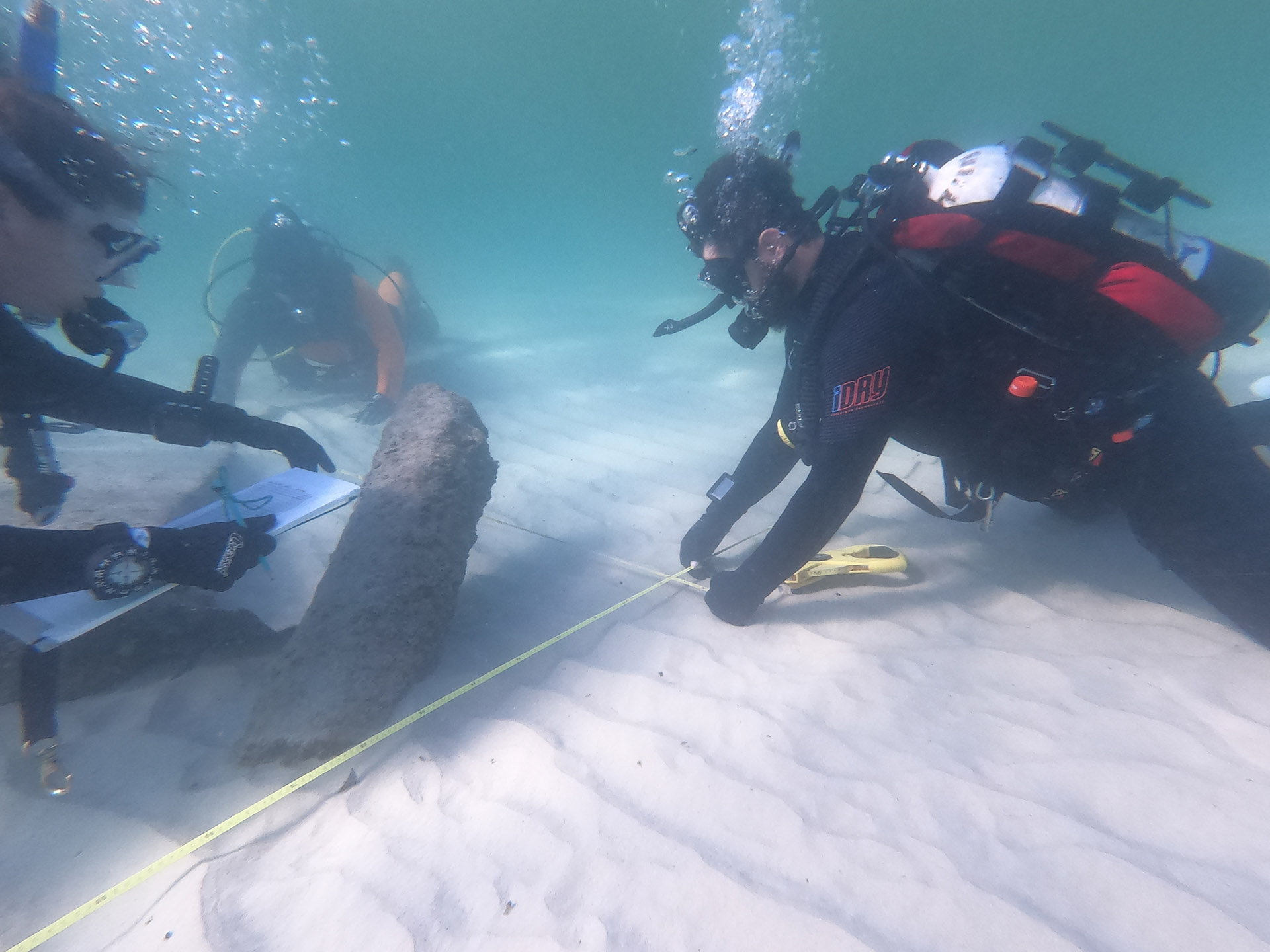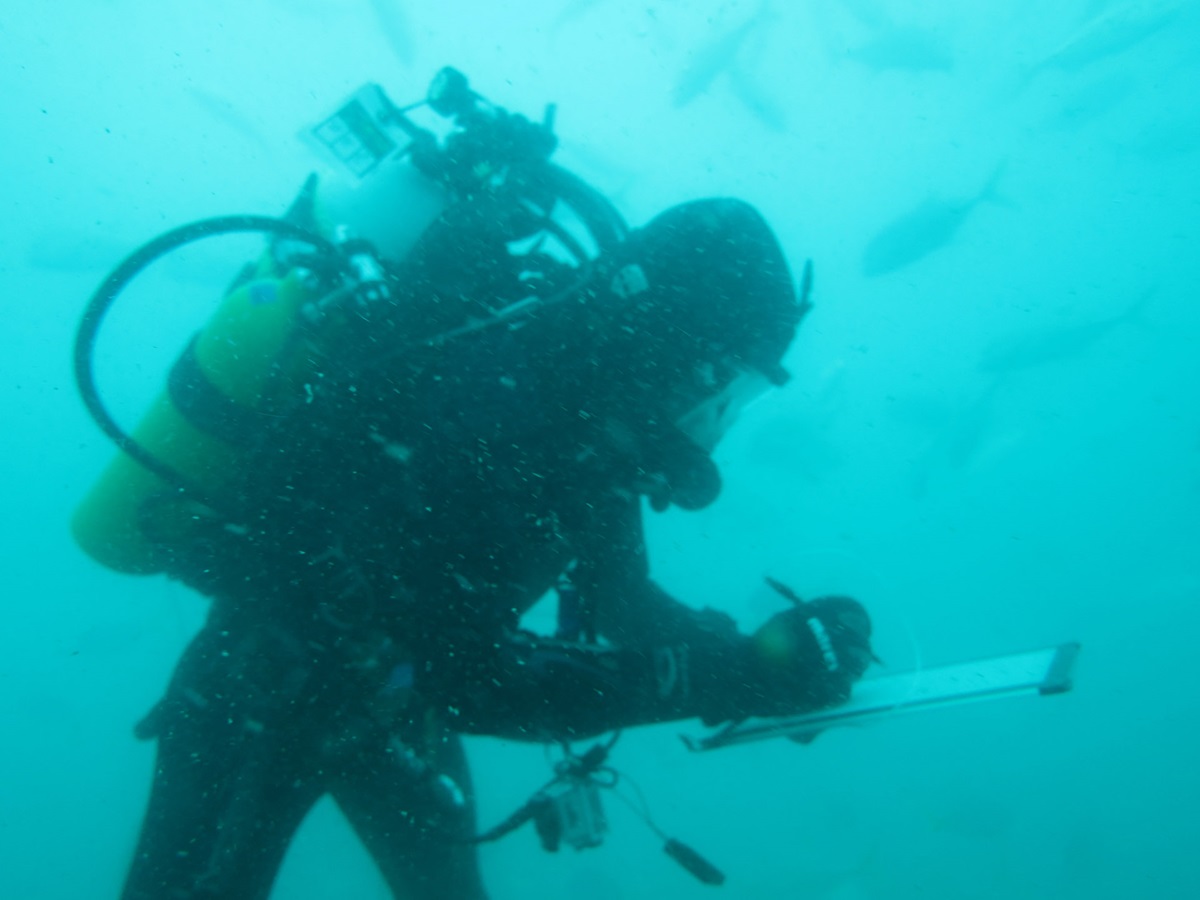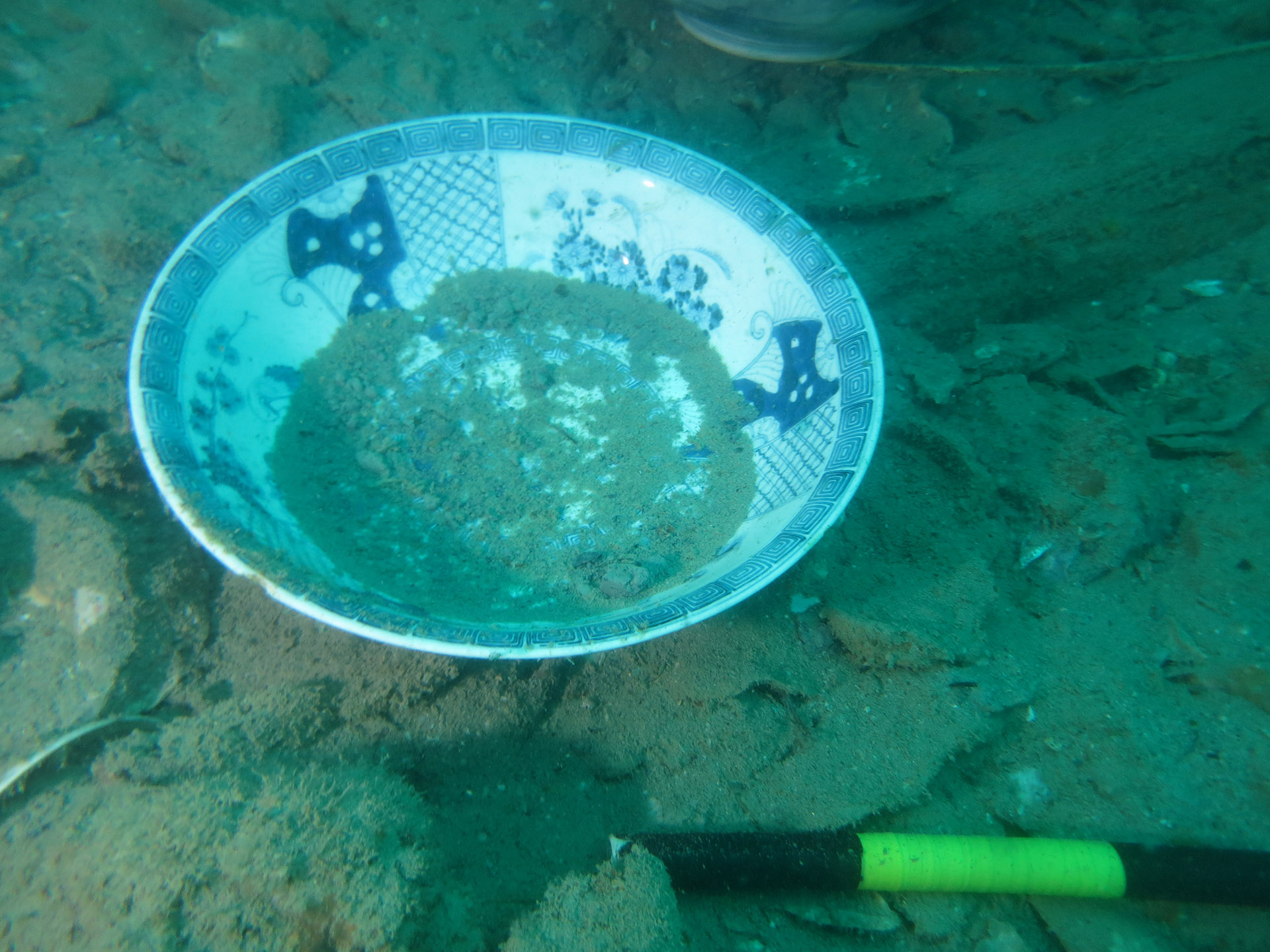
Over the past decade, diving archaeologists have mapped and excavated a Japanese pearling ship off Arnhem Land.
A new collaborative exhibition, created by the Australian National Maritime Museum and the Northern Territory Government’s Heritage Branch, brings the raised artefacts, diving, film and stories together for the first time. David Steinberg shares the story of the sunken Sanyo Maru.

Image: Courtesy of NT Heritage Branch
Journalist Terry Southwell-Keely visited Arnhem Land in 1938 and saw what he described as a ‘floating foreign township whose existence is unsuspected by Australians’. This was the huge Japanese pearl shell fleet, made up of hundreds of divers and crew, working and living just off the north Australian coast. They out-competed local pearlers, made contact with local Aboriginal peoples and others, and infuriated Australian authorities.
But despite dominating the pearl shell industry, they were not immune to tragedy, which included the loss of their largest ship, Sanyo Maru, in July 1937. Overloaded with pearl shell, it sank in a storm, forgotten for decades until rediscovered and explored by diving archaeologists.

Image: Courtesy of NT Heritage Branch
This recently opened exhibition explores the artefacts raised from Sanyo Maru by the dive team, including the decorated porcelain dinner set that made up the captain’s table. What do we learn about the shared experience of meals at sea from the quality of the dinnerware and the meaning of the decorative motifs? Did these items signify a high status, or were they merely common utensils?
Other artefacts point to the dangers of working at sea far from a safe port, such as a surgical kit and medicines. Also making up the exhibition is rarely seen historical footage of the fleet in Arnhem Land waters, made by a Japanese cameraman. Here, historical film and archaeology work together to open a window into a neglected chapter of our maritime past.
The work has a strong focus on underwater archaeology, scientific diving and the decisions made by experts to understand this shipwreck. They contended with an environment renowned for its strong tides, murky water and tropical storms. Visitors can watch footage shot by the camera mounted on the diver’s helmet, and listen as divers discuss what they see with the support team on the surface.

Image: Courtesy of NT Heritage Branch
Visit the museum to learn about Sanyo Maru and the research undertaken to understand its story. It’s an important project with unexpected implications for maritime archaeology in northern Australia.
This project has been aided by the Australian Government’s Visions of Australia program, with assistance from the Australian Underwater Cultural Heritage Program, Department of Agriculture, Water and the Environment.
Sanyo Maru, A shipwreck off Arnhem Land is on until 30 January 2022.
